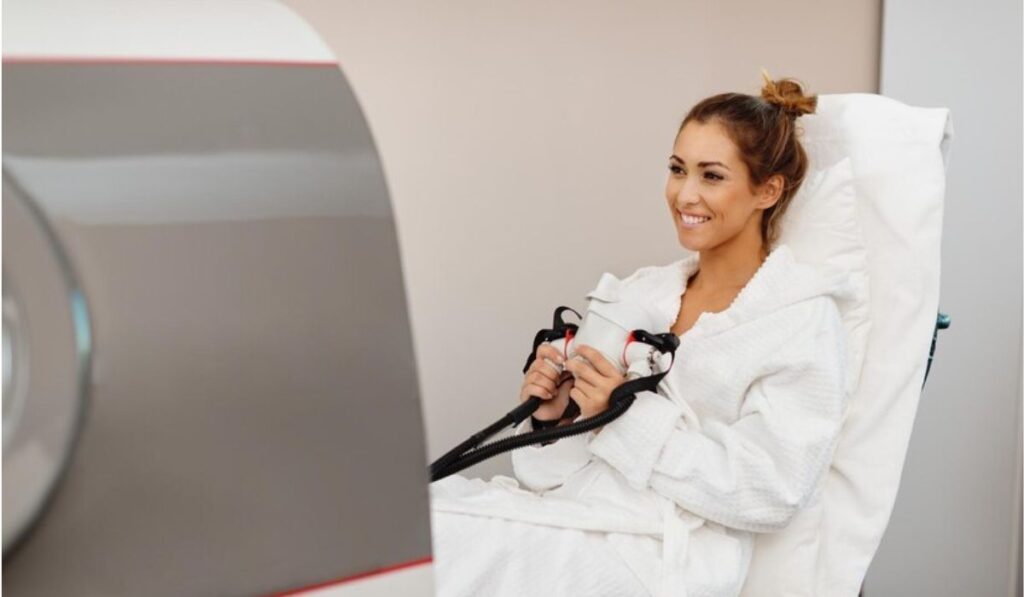Hyperbaric treatment (HBOT) increases the amount of oxygen in the blood. This improves the healing abilities of the body, minimizes inflammatory responses, and stimulates tissue repair. HBOT can help in managing certain illnesses like chronic ulcers, carbon monoxide poisoning, and some types of infections. Here is a brief history of HBOT:
The Origin of Hyperbaric Oxygen Therapy
Hyperbaric treatment has its roots in the Age of Enlightenment in the 17th century. Detailed documentation indicates that the use of pressurized oxygen to address different illnesses was first developed by the British clergyman and natural philosopher Nathaniel Henshaw. In 1662, Henshaw designed a pressurized chamber in which patients could enter to breathe in oxygen-rich air. Henshaw believed that the air pressure change within the chamber could cure many illnesses, including respiratory problems and diseases. This early experiment marked the start of the modern formulation and application of HBOT.
Major Innovations During the 19th Century
In the 19th century, a French physicist and inventor, Paul Bert, contributed to the study of HBOT. Bert proved the effectiveness of oxygen pressure in his research for illnesses like decompression sickness, which laid the foundation for the application of HBOT in modern medicine. Bert’s work also exposed the risks of high oxygen pressure, which helped future technicians make adjustments that enabled safe operational conditions for HBOT.
During this time, hyperbaric treatment witnessed several innovations. The first was the establishment of initial hyperbaric chambers, which aimed to address decompression sickness in divers. These early chambers were crude and simple, constructed of steel, and often operated by compressed air via hand power. Dr. Orval Cunningham developed an early chamber in 1921. He made a modest-sized chamber known as ‘Steel Ball Hospital‘ with a chamber large enough to take more than one patient and used pressurized oxygen therapy. Progress was made in applying pneumatic techniques for the management of compressed air and oxygen to enhance the effectiveness of the treatments.
Expansion During World War 2
Technological progress in hyperbaric therapy became more active during the Second World War. To relieve underwater salvage diver decompression sickness, the U.S. Navy introduced enhanced recompression chambers. English scientist J.B.S. Haldane also lent his efforts to developing breathing mixes with high oxygen levels for deep-sea diving. Special transportable hyperbaric chambers were developed for operation in submarines as well as rescue ships. Scientists also studied the effectiveness of hyperbaric oxygen therapy in the treatment of gas gangrene in soldiers with wounds.
Advancements in the 1950s and 1960s
Specialists established guidelines for treating divers and submariners suffering from decompression sickness through hyperbaric oxygen therapy. Multiplace chambers were also developed to accommodate multiple patients, and the medical staff could attend to any patient conveniently during the treatment. Advances in pressure regulation and protection measures raised the effectiveness and safety of hyperbaric therapies. Researchers also examined the efficacy of HBOT for wound treatment, focusing on diabetic ulcers.
Advances in the Late 20th Century
New computerized control systems improved the accuracy and safety of oxygen administration in treatments. Scientific innovations in the construction of the chamber meant that patients being treated through radiotherapy could do so in a far more comfortable environment without the feeling of being enclosed. The development of the portable chamber made it possible to treat patients in different areas far from the hospital. New insights into oxygen toxicity and the ways to prevent or minimize it resulted in better and safer approaches to treating the conditions.
Hyperbaric Treatment in the 21st Century
Modern multi-place chambers, which are safer than their predecessors and more comfortable for patients, have appeared in healthcare centers around the globe. Engineers have created new options to control the flow, pressure, and gas deliveries more accurately. New monitoring devices have been developed to record patients’ vital signs and oxygen saturation during hyperbaric treatments. Scientists have also developed sophisticated dressings that can complement hyperbaric oxygen therapy in the case of chronic wounds.
Sign Up for Hyperbaric Treatment
Hyperbaric treatment increases the levels of oxygen in the body, which enhances the healing rate of wounds and damaged tissues. This therapy can also help with decompression sickness, a condition that affects scuba divers and workers at high altitudes. Reach out to an expert to get started with hyperbaric treatment.







